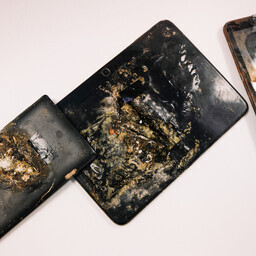Lithium-ion batteries are everywhere. They are used in phones, computers, tools, and electric cars. Also in large energy storage solutions, such as power banks.
Reio Praats, a junior researcher at the Institute of Chemical and Biological Physics, says that cobalt and nickel from batteries can be recycled. But graphite usually ends up as waste. Graphite is crucial for battery operation and often makes up to a quarter of the battery's weight.
Currently, most graphite is produced in China. This creates supply security issues in Europe. Reio Praats found a way in his doctoral thesis to use graphite from old batteries for new batteries.
His work used lithium-ion battery waste, which mainly contains graphite and small amounts of metals. Praats produced electrocatalysts from this, which are needed for manufacturing new types of batteries.
Metal-air batteries are cheaper and more environmentally friendly than lithium-ion batteries. Electrocatalysts help these batteries perform better. Praats says his results were unexpected but successful.
Previously, graphite from old batteries was considered waste. Praats believes such materials should be reused to reduce waste and save resources.
Old lithium-ion batteries are processed using pyro- and hydrometallurgical methods. In the pyro process, graphite is burned away. In the hydro process, batteries are crushed, and valuable metals are extracted. What remains is a black mass containing graphite and metal residues.
The goal of Praats' doctoral thesis was to find a way to use the black mass residue for producing electrocatalysts. These catalysts accelerate chemical reactions essential for new types of batteries.
Currently, rare and expensive metals like platinum and iridium are used to make electrocatalysts. Praats found a cheaper and more environmentally friendly alternative.
His work used residue containing graphite and metal traces. These metals were important in making the electrocatalysts. Praats' experiments showed that his materials performed better compared to precious metals.
Currently, there are hundreds of thousands of tons of black mass residue that cannot be utilized. Praats' work helps find new uses for them and develop a circular economy. It also aids in better storage of green energy, such as solar and wind power.
Reio Praats will defend his doctoral thesis on September 29 at Tallinn University of Technology. His work focuses on reusing lithium-ion battery waste for new batteries.

